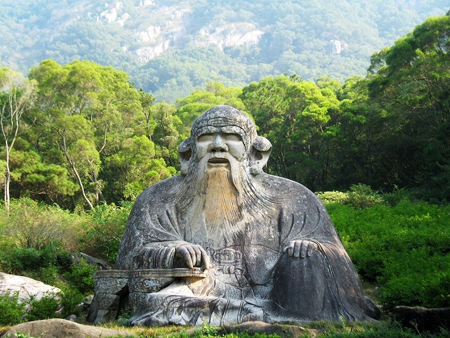
Taoism started as a combination of psychology and philosophy but evolved into a religious faith in 440 CE when it was adopted as a state religion. At that time Lao-Tse became popularly venerated as a deity. Taoism, along with Buddhism and Confucianism, became one of the three great religions of China. With the end of the Ch'ing Dynasty in 1911, state support for Taoism ended. Much of the Taoist heritage was destroyed during the next period of warlords. During the Cultural Revolution in China from 1966 to 1976, much of the remaining Taoist heritage was destroyed. Some religious tolerance has been restored under Deng Xiao-ping from 1982 to the present time.
Some Taoists believed that spirits pervaded nature (both the natural world and the internal world within the human body). Theologically, these myriad spirits were simply many manifestations of the one Dao, which could not be represented as an image or a particular thing. As the Taoist pantheon developed, it came to mirror the imperial bureaucracy in heaven and hell. The head of the heavenly bureaucracy was the jade Emperor, who governed spirits assigned to oversee the workings of the natural world and the administration of moral justice. The gods in heaven acted like and were treated like the officials in the world of men; worshipping the gods was a kind of rehearsal of attitudes toward secular authorities. On the other hand, the demons and ghosts of hell acted like and were treated like the bullies, outlaws, and threatening strangers in the real world; they were bribed by the people and were ritually arrested by the martial forces of the spirit officials. The common people, who after all had little influence with their earthly rulers, sought by worshipping spirits to keep troubles at bay and ensure the blessings of health, wealth, and longevity.